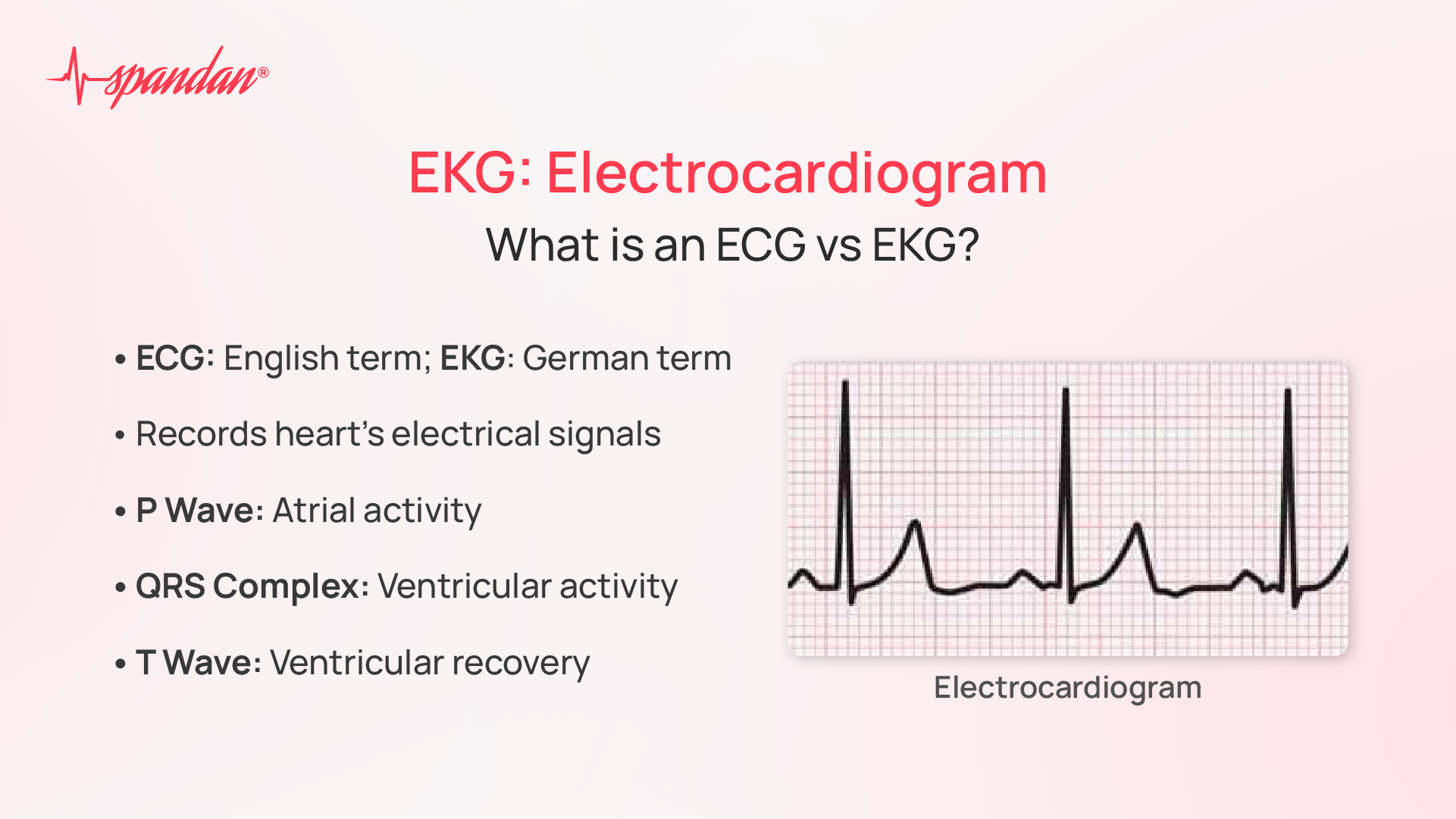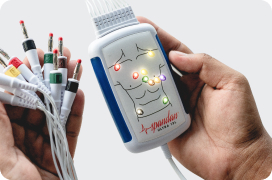
Related Article
Author:- Mr. Ritesh Sharma
When it comes to monitoring heart health, the terms EKG and ECG often come up. Though they might seem confusing, understanding these terms is crucial for anyone interested in cardiovascular health. This blog will clarify what an EKG is, how it compares to an ECG, and why it’s essential to be informed about these terms.
What is an EKG?
An EKG, or electrocardiogram, is a test that records the electrical activity of the heart over a period of time. This test provides valuable insights into the heart’s rhythm and can help detect various cardiac conditions. The primary function of an EKG is to capture the heart’s electrical signals as it beats, creating a graphical representation of these signals that can be analyzed for any irregularities.
The Terminology of EKG Vs. ECG
The terms EKG and ECG are often used interchangeably, but they essentially refer to the same procedure. The discrepancy arises from language differences and historical context:
- ECG: This abbreviation stands for “electrocardiogram” in English, derived from the Greek word “kardia,” meaning heart. It’s the term most commonly used in medical settings.
- EKG: This abbreviation stands for “elektrokardiogramm,” the German equivalent of “electrocardiogram.” It is used in many English-speaking countries as well, largely due to historical reasons and the influence of early German medical practices.
Despite the difference in terminology, both EKG and ECG refer to the same diagnostic procedure used to assess heart health.
How Does an EKG Work?
This works by placing electrodes on the skin at various points around the chest, arms, and legs. These electrodes detect the electrical impulses generated by the heart as it beats. The impulses are then transmitted to this machine, which produces a graphical representation of the heart’s electrical activity.
The resulting EKG trace displays several key components:
- P Wave: Represents atrial depolarization.
- QRS Complex: Represents ventricular depolarization.
- T Wave: Represents ventricular repolarization.
These components are essential for evaluating the heart’s rhythm and identifying any abnormalities.
Why Is an EKG Important?
This is a valuable tool for diagnosing various heart conditions, including:
- Arrhythmias: Irregular heartbeats that may be too fast, too slow, or erratic.
- Myocardial Infarction: Commonly known as a heart attack, which occurs when blood flow to a part of the heart is blocked.
- Heart Valve Problems: Conditions affecting the heart’s valves, which can impact blood flow.
- Electrolyte Imbalances: Abnormal levels of potassium, calcium, or magnesium can affect heart function.
By providing a snapshot of the heart’s electrical activity, this helps doctors identify potential issues early, allowing for timely intervention and treatment.
The Procedure
Undergoing an EKG is a straightforward process. Here’s what you can expect:
- Preparation: You will be asked to remove any clothing from the upper body and lie down on an examination table.
- Electrode Placement: Electrodes will be placed on your chest, arms, and legs. These electrodes are usually sticky pads that adhere to the skin.
- Recording: Once the electrodes are in place, this machine will record your heart’s electrical activity for a few minutes.
- Analysis: The recorded data will be analyzed by a healthcare professional to interpret the results and determine if any abnormalities are present.
EKG Interpretation and Results
The results of these are analyzed by looking at the overall shape and timing of the waves and intervals on the EKG trace. These findings can reveal various conditions, including:
- Normal Heart Rhythm: Indicates that the heart is functioning properly.
- Sinus Arrhythmia: Slight irregularities in heart rate that are often harmless.
- Atrial Fibrillation: A type of arrhythmia characterized by rapid, irregular heartbeats.
- ST Elevation: May indicate a heart attack or other cardiac issue.
Limitations and Considerations
While an EKG is a valuable diagnostic tool, it is not without its limitations. This provides a snapshot of the heart’s activity at a specific moment, so it may not capture intermittent issues that occur infrequently. For more comprehensive analysis, additional tests or continuous monitoring may be required.
Additionally, factors such as body movement, poor electrode placement, or interference from other electrical devices can affect the accuracy of this.
Advances in EKG Technology
Modern advancements in technology have made heart monitoring more accessible and efficient. Portable devices, like Spandan, allow individuals to monitor their heart health from the comfort of their homes. These devices offer features such as real-time ECG recording, detailed analysis, and easy data sharing with healthcare providers.
In summary, an EKG (electrocardiogram) is a crucial tool in cardiovascular health, providing insights into the heart’s electrical activity and helping diagnose various conditions. While these both terms refer to the same procedure, understanding their usage can help clarify communication in medical contexts. Whether you’re undergoing a routine check-up or monitoring a specific condition, an EKG plays a vital role in maintaining heart health and guiding treatment decisions.
With advancements in technology, accessing and interpreting EKG results has become more user-friendly, empowering individuals to take an active role in their heart health management.




